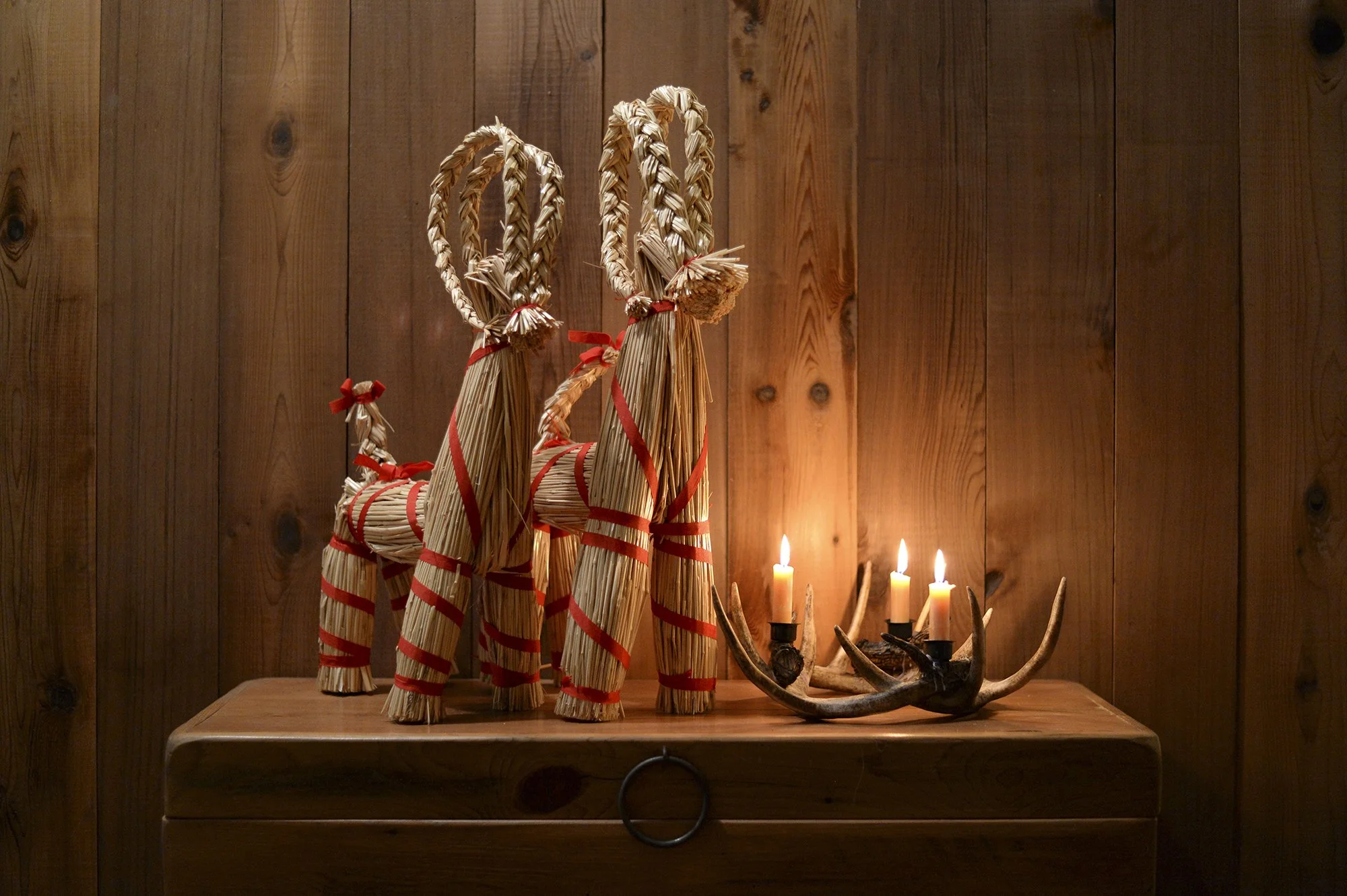Norse Yule Goat
Julebukk (Yule goat) is a Norse Yule/Christmas symbol and tradition prevalent in Nordic countries, with modern representations typically made out of straw.
ORIGINS
Julebukk originated in Norway prior to Christianization. The celebration of the goat is associated with Þórr (god of battle and men), who rides the skies in Reið (a chariot) pulled by two goats, Tanngrisnir (teeth-barer), and Tanngnjóstr (teeth-grinder).
In addition, the last bundle of grain from the fall harvest is traditionally credited with magical properties as the spirit of the harvest, and is saved for Yule celebrations.
MODERN CELEBRATIONS
The use and display of Julebukk is widespread in Nordic countries during the Yule holiday, with IKEA traditionally erecting very large Yule goats at all of its Nordic stores. Interestingly, Icelandic people seem to take issues with the IKEA Julebukk, as the goat is systematically burnt to the ground every year, well before Yule, and despite substantial security at the Reykjavík store.
JULEBUKKING
In Viking times, Norsemen would wear goat skins during the Yule festival, and go from house to house carrying a goat head. During forced Christianization, the tradition was however separated from Norse culture by the Church. Julebukking then evolved into going door to door singing Christmas carols, and receiving threats for the performance.
An alternate tradition consists in neighbors attempting to identify people who hides under masks and costumes that represent a goat, and going house to house, while sharing food and treats.


